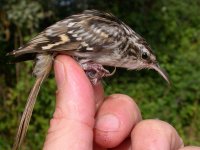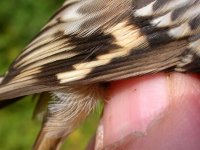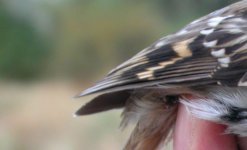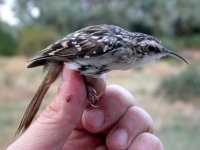Hi All,
I recently posted some photos of what I thought was a common treecreeper, but received an email from someone who said:
"I think it is a Short-toed Treecreeper. The shape of the buffish wingbar, the bill, the white spots on the end of the primaries all suggest this.
Although the hind claw is quite long, more like the Common Treecreepers. It would be good if others have a look at it."
The photos can be seen on my website at: http://mikeatkinson.net/Treecreeper.htm
Any comments would be greatly appreciated!
Many thanks,
Mike.
I recently posted some photos of what I thought was a common treecreeper, but received an email from someone who said:
"I think it is a Short-toed Treecreeper. The shape of the buffish wingbar, the bill, the white spots on the end of the primaries all suggest this.
Although the hind claw is quite long, more like the Common Treecreepers. It would be good if others have a look at it."
The photos can be seen on my website at: http://mikeatkinson.net/Treecreeper.htm
Any comments would be greatly appreciated!
Many thanks,
Mike.








